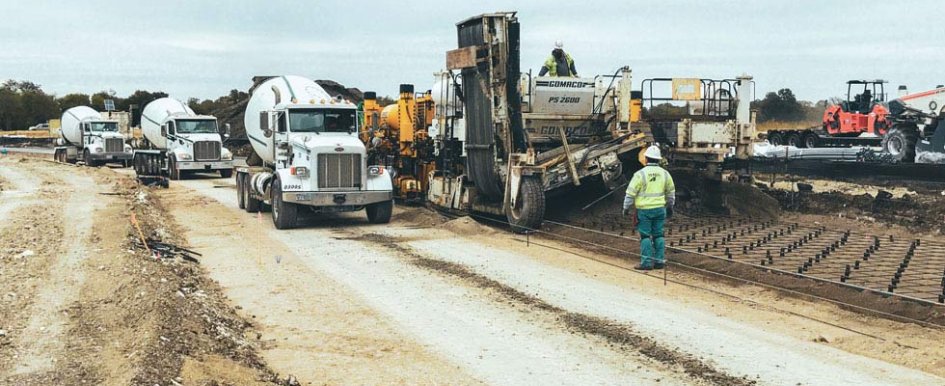
Heavy civil construction companies use lots of expensive equipment on jobsites. It’s common to have over a million dollars of fleet equipment on even a minor job. With an operations investment this large, fleet managers need metrics to determine the success of their fleet functions. The best metrics for fleet operations are based on operation performance and cost control. There are many key performance indicators (KPIs) for fleet management that are important for improving construction fleet profitability. Consider the following when it comes to optimizing the performance of your fleet.
KPIs for the Performance of Maintenance Operations
Fleet equipment needs to be appropriately maintained to ensure it is operating at peak performance. If equipment goes down when on the jobsite, it creates unexpected costs that include fixing the equipment, disruptions to the workflow and schedule, idle operators and rental charges for substitute equipment. Restoring a piece of equipment when it goes down instead of during its planned maintenance schedule is more expensive.
1. Tracking Equipment
Equipment needs to be tracked so you always know where your expensive assets are located. For heavy equipment, making use of telematics devices, including GPS and electronic logging devices (ELDs), can help fleet managers keep track of where all your equipment is on any given day to prevent loss or theft.
2. Keep Preventive Maintenance Schedules Up to Date
Contractors’ best practices are to keep construction equipment on a preventive maintenance schedule to avoid unexpected costs. The industry average for unscheduled downtime hours is 25%, but companies with a preventive maintenance program drive this down to 5%.
3. Optimize Mechanic Time
Mechanics work hard to keep equipment operating at peak performance. If your mechanics are working too much overtime, it may mean you don’t have enough mechanics or you aren’t running effective preventive maintenance. Mechanics can be more efficient with automated scheduling.
Make sure your mechanics have more “wrench time” by removing inefficiencies like locating equipment history/details, calling people for information on a work order or repairing a piece of equipment only to find it back in the shop a week later for its scheduled maintenance. Mechanics can save time by utilizing maintenance management software to receive work orders electronically and know what needs to be done to the equipment before starting the repair. Maintenance software that integrates with your accounting system also makes payroll easier.
4. Measure Uptime
Uptime is a valuable metric, helping to evaluate equipment choices, preventive maintenance, operator performance and more. Planned preventive maintenance leads to more equipment uptime. Some maintenance software lets mechanics know what equipment is needed to make repairs, shortening the time to get the equipment back in working order. The more equipment is up and running well, the more projects can be completed on time and within budget.
KPIs for Keeping Costs in Check & Budget Adherence
Most fleet managers try to control expenses, but there are too many expenses to manage manually. Fleet management software can track costs in real time and generate reports to confirm trends in fleet operations, uncover bottlenecks and help you take action when improvements are needed.
Fleet metrics, combined with feedback from supervisors and operators in the field, are a way for managers to get the big picture of what is going on with a fleet on a particular jobsite. Collecting data from monitoring devices within your fleet helps managers make more informed decisions about driver safety programs. Plus, measuring an individual driver’s behavior can identify ways to reduce the risk of accidents.
One of the most significant benefits of using fleet metrics on driver performance and behavior is reducing risk on the jobsite, which will lead to lower costs.
1. Equipment Costs
Expenses related to equipment need to be broken down into fixed and operating costs, with each cost category tracked through specific metrics. Fixed costs include taxes, insurance, depreciation, licenses, permits, loans and rental payments. Operating costs are variable and include tolls, parts replacement, parking and salaries. Tracking expenses for each piece of equipment in your fleet helps you track and analyze the total cost of ownership.
2. Fuel Costs
Fuel is one of the most significant expenses for a fleet. Consumption needs to be monitored; if a piece of equipment is using too much fuel, there could be a problem with it. Keeping track of paper receipts from fuel pumps can be time-consuming when the figures must be entered manually. Fuel management software saves time and eliminates errors from manual entry. Using route optimization software can lower mileage, thus cutting fuel costs. Streamlining routes can improve performance and fuel efficiency across your fleet and even help save on fuel costs.
3. Driver Behavior
Fleet managers need to monitor driving habits, such as driving over the speed limit, erratic steering, hard braking or excess idling. Monitoring devices on equipment send alerts to managers when drivers engage in bad driving behavior. This bad behavior can not only increase fuel costs, but also lead to accidents and cause injuries. Tracking how your drivers drive can help to lower fuel usage and insurance costs.
Eventually, growing companies reach a size where the team’s ability to track, manage and report on these fleet performance metrics becomes challenging without the help of software. Many products exist on the market to help measure and monitor KPIs to ensure profitable operations.
